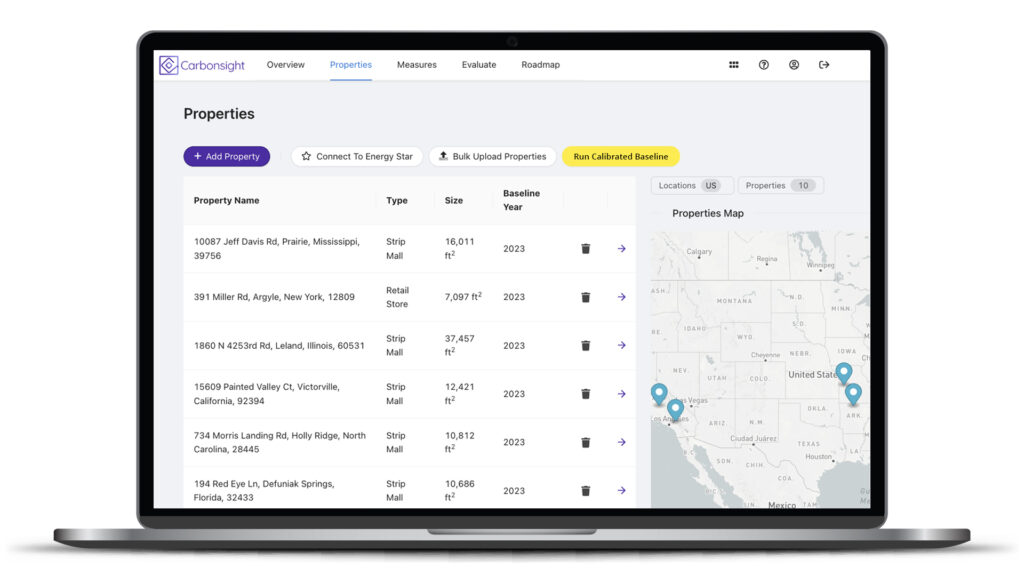The real estate sector emerges as a noteworthy contributor to the surging tide of carbon emissions. In this blog post, we delve into a trove of strategies and solutions primed for the reduction of carbon emissions in real estate. Additionally, we spotlight Carbonsight, a cutting-edge software solution that empowers sustainability teams and building owners to build a plan of action to reduce their carbon footprint.
Strategies for Carbon Emission Reduction: Illuminating the Path
- Energy Efficiency: The key to reducing carbon in real estate hinges on enhancing energy efficiency. This means incorporating appliances and systems that use less energy. Switching to eco-friendly LED lighting, adopting water-saving fixtures, and optimizing heating and cooling systems—all these steps amplify the impact of carbon reduction.
- Fuel Switching: Switching away from natural gas and other fossil fuels towards electric-based systems helps drive down carbon. As the electric grid grows cleaner, this level will have a growing impact over time.
- Renewable Energy: A powerful approach to combat carbon emissions is embracing renewable energy sources. Solutions like solar panels, wind turbines, and geothermal systems hold significant potential. Roofs, parking lots, and open areas can accommodate solar panels, enabling the production of electricity without relying on fossil fuels. Embracing renewable energy allows those involved in real estate to make a positive impact on climate change and reduce dependence on non-renewable energy sources.
The Role of Innovative Solutions: Carbonsight
In the fight against carbon emissions, Carbonsight stands out as a powerful tool. This innovative software empowers sustainability teams and building owners with instant information about energy use, carbon emissions, and building performance.
Using these insights, sustainability teams and building owners can create practical plans to reduce carbon emissions, improve energy efficiency, and financial performance.

Mapping the Path to a Greener Future: Architects and Building Owners Leading the Way
In the midst of heightened climate concerns, the real estate sector emerges as a catalyst for significant transformation. By employing a combination of tactics involving energy efficiency, fuel switching renewable energy, and offsets, those involved in real estate can gradually diminish their carbon impact. The incorporation of advanced software tools like Carbonsight serves as a guiding star for this voyage.








